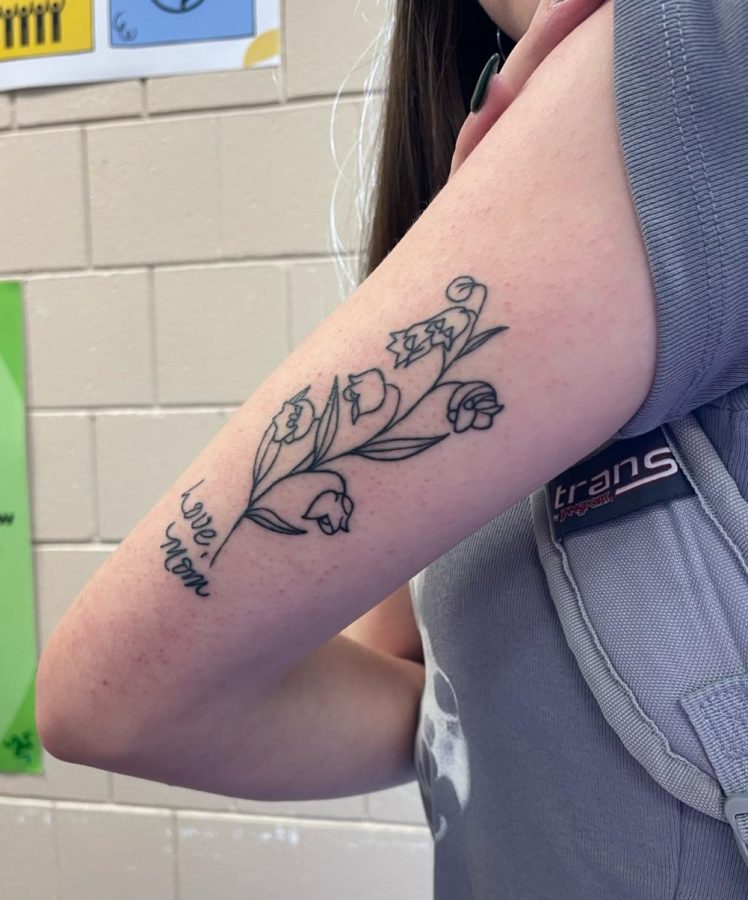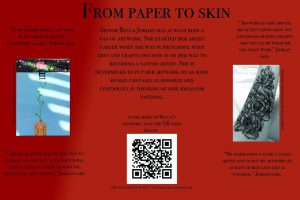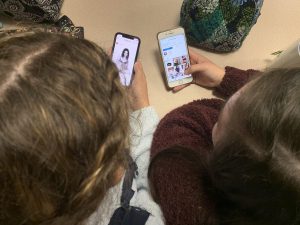Teenagers use body modifications to express themselves
Photo by Esmeralda Palma-Andrade
Senior Bella Navarro has a tattoo above her elbow. Navarro has tattoos and piercings to express herself.
June 1, 2023
Body modifications have been a part of society for a long time. The oldest mummy discovered, Ötzi, has marks that could indicate around 61 tattoos and stretched ear lobe piercings. The meaning of body modifications has changed as society has progressed. Now teenagers are using body modifications like tattoos and piercings to express their identities.
A study conducted by Johns Hopkins Hospital shows 10-23% of teens have a tattoo and those with body piercings are 27-42%. Body modifications come in various forms and there are different motivations behind getting one. Teenagers believe that body modifications help with security in their appearance and self expression.
“They [piercings] help with my appearance and with the look that I try to go for and they make me feel more confident in myself,” senior Ayva Newkirk explained.
Society has stigmatized piercings and tattoos by affiliating it with rebellious and risk-taking behavior. There is no doubt that norms of society are changing and the ideas of body modification are too.
“Older generations don’t like to see change from things they’re used to. Tattoos and body piercings weren’t all that accepted in the early 1900-1960’s, which creates a really solid opinion in their principles regarding body modification,” senior Link Leikam said.
Many teenagers receive prejudice from older generations. Additionally when teenagers receive comments directly pointing out their body modifications it can single them out. Newkirk said she only ever gets backlash from older people, they would often criticize her facial piercings.
The tolerance of body modifications and reaction from family can also impact teenagers. Parents have an impact on what teenagers can and cannot, many will shun their kids from getting body modifications. Many wait until they are adults to get them. Unlike Newkirk, Leikam had to wait until their 18th birthday to get their current body modifications.
Although body modifications and art have come around to being more acceptable, other cultures have used them for a long time. The Maori people of New Zealand have tattoos, moko, that tell the wearers family lineage and social standing in society. Indigenous cultures in Mexico and South America had similar traditions but with piercings.
With an influx of teenagers wanting to be more unique it only makes sense for that to translate into a permanent piece of art on their bodies. Although it might be a difficult concept to grasp for some, body modifications give teenagers the opportunity to express values they could not otherwise. It is safe to say that the perception of tattoos and piercings has changed and is continuing to change.
pull quote: “Older generations don’t like to see change from things they’re used to. Tattoos and body piercings weren’t all that accepted in the early 1900-1960’s, which creates a really solid opinion in their principles regarding body modification,” senior Link Leikam said.










